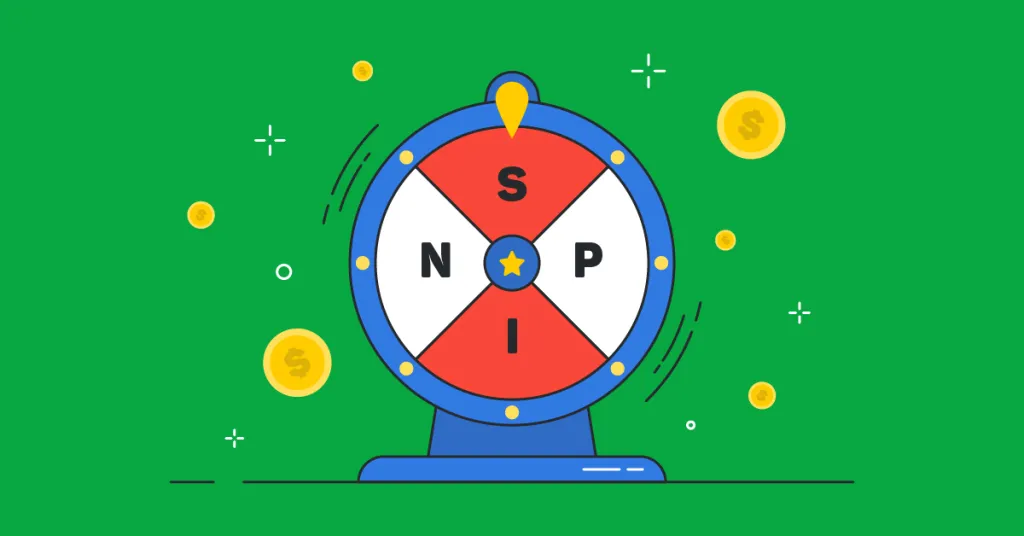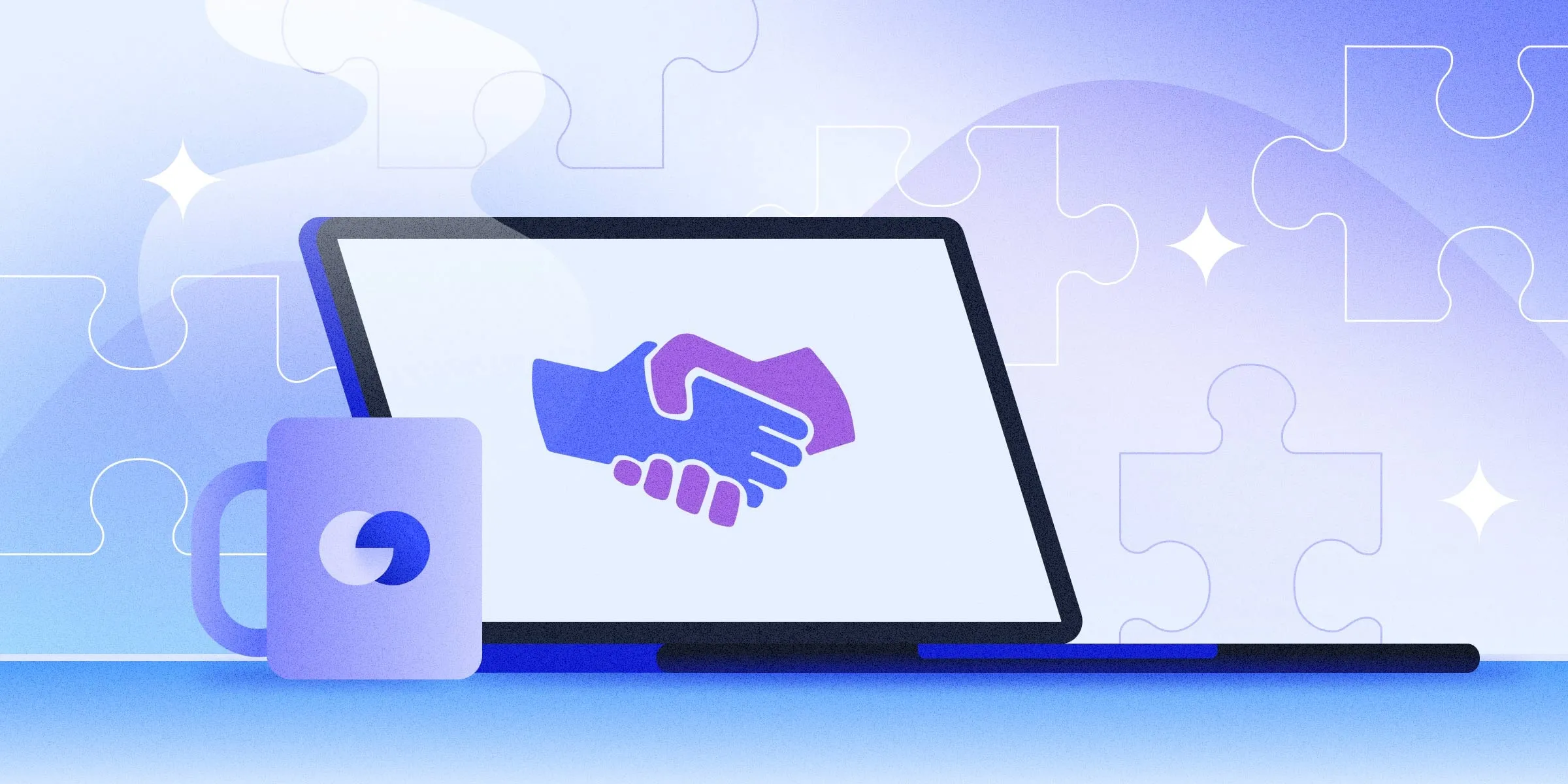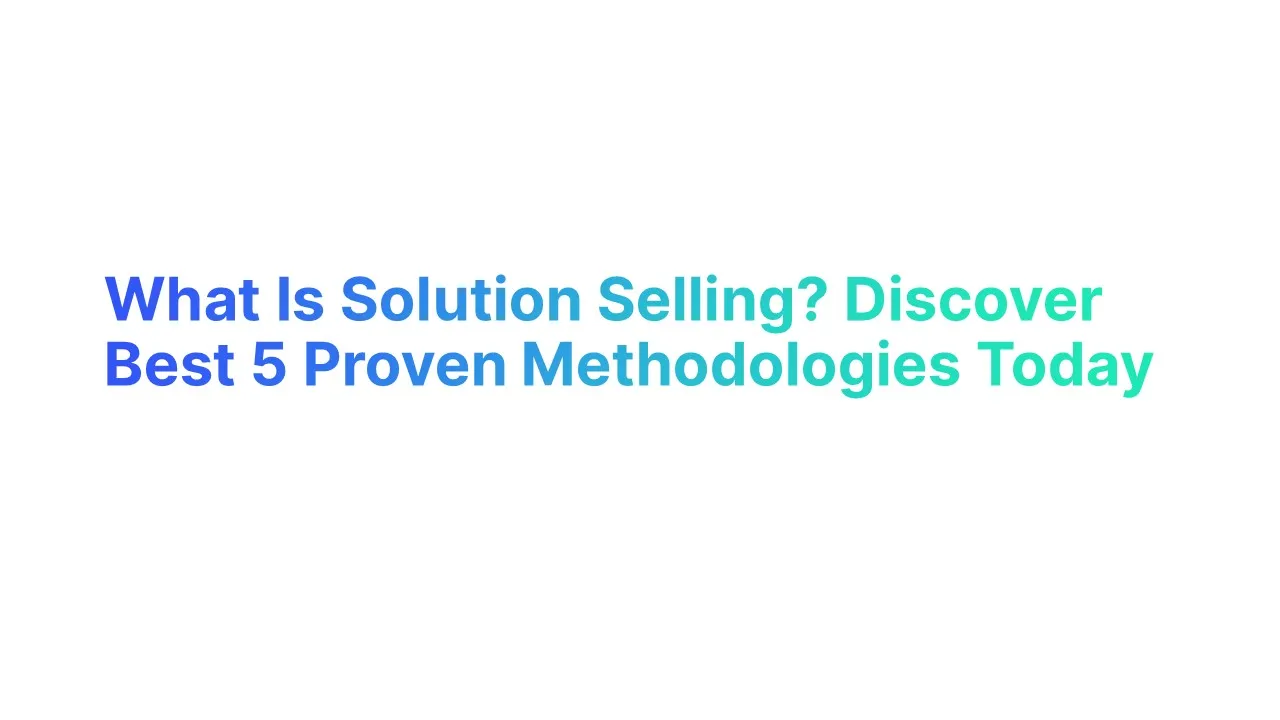What is Solution Selling?

Solution selling is a sales process where the focus is on solving the customer’s problem. Instead of just selling a product, sales reps provide a solution through a customer-centric approach.
Sales representatives should be well-versed in solution selling techniques to effectively address customer needs.
This helps customers see the real value in what they are buying. Sales teams use this method to understand customer needs deeply and address their pain points effectively.
According to a study by CSO Insights, companies that use a solution selling process have a 15% higher win rate compared to those that use a traditional sales process.
Why is Solution Selling Important for Sales Teams
Solution selling is crucial for sales teams because it builds strong customer relationships. Solution selling helps in creating a strong value proposition for customers.
By clearly demonstrating how the product or service meets their specific needs. Solution selling requires a deep understanding of the customer's challenges and how your product can address them.
1. Improves Sales Performance:
- Companies using solution selling saw a 20% increase in sales performance.
- This is because customers feel understood and valued through a consultative approach.
- Research by Gartner shows that solution selling can lead to a 25% increase in sales rep productivity.
2. Addresses Customer Pain Points:
- By focusing on customer needs, sales reps can offer products or services that solve specific problems.
- Understanding the customer journey helps in addressing pain points more effectively.
- This makes the sales process more effective.
- A study by HubSpot found that 75% of customers prefer to buy from sales professionals who understand their pain points.
3. Builds Trust and Loyalty:
- Customers trust sales reps who listen and provide tailored solutions.
- Adopting a solution sales approach helps build trust and long-term customer relationships.
- This leads to repeat business and referrals.
- According to Salesforce, 89% of customers are more likely to make another purchase after a positive sales experience.
Top 5 Solution Selling Methodologies
Choosing the right sales methodology is crucial for implementing a successful solution selling process.
1. The SPIN Selling Technique

The SPIN Selling technique is a popular solution selling methodology developed by Neil Rackham. SPIN stands for Situation, Problem, Implication, and Need-Payoff.
This method helps sales reps ask the right questions to uncover customer pain points and offer the best solutions. Asking the right solution selling questions is key to uncovering customer needs and pain points.
- Situation Questions: These questions help sales reps understand the customer’s current situation.
- Problem Questions: These questions identify the problems the customer is facing.
- Implication Questions: These questions highlight the impact of the customer’s problems.
- Need-Payoff Questions: These questions focus on the benefits of solving the customer’s problems. For example, “How would a more efficient tool improve your sales process?”
The SPIN Selling technique can be applied throughout the sales cycle to ensure that each stage is aligned with the customer's needs and challenges.
It is a solution selling approach particularly beneficial in B2B SaaS environments where products are customized and complex.
2. The Challenger Sale

The Challenger Sale is another effective solution selling strategy developed by Matthew Dixon and Brent Adamson. This approach focuses on teaching, tailoring, and taking control during the sales process.
- Teach: Sales reps provide valuable insights and educate the customer about potential solutions.
- Tailor: Sales reps tailor their solutions to the specific needs of the customer. They customize their sales pitch to address the unique challenges faced by the customer’s industry.
- Take Control: Sales reps take control of the sales conversation by confidently guiding the customer towards the best solution. They handle objections assertively and steer the discussion towards closing the deal.
The Challenger Sale is one of the selling strategies that emphasizes tailoring approaches to individual leads and understanding customer behavior. This helps sales teams stand out by providing unique insights and confidently leading the sales process.
3. The Sandler Selling System

The Sandler Selling System is a popular solution selling methodology that emphasizes building strong relationships with customers. It focuses on creating a mutual level of trust and understanding between sales reps and their customers.
- Building Trust: Sales reps start by establishing a good rapport with the customer. They ask questions to understand the customer’s situation and pain points deeply.
- Qualifying the Prospect: Sales reps determine if the potential customer is a good fit for their product or service. They ask specific questions to uncover the customer’s needs and whether their product can provide a solution.
- The Sandler Selling System helps in moving prospects through the sales funnel by ensuring they are properly qualified.
- Creating a Mutual Agreement: Sales reps and customers agree on the problem and the solution. This step ensures that both parties are on the same page and understand each other’s expectations.
- Closing the Deal: Sales reps help the customer see the value of the solution and guide them towards making a purchase decision.
The Sandler Selling System helps sales reps understand customer pain points and provide tailored solutions, improving the overall sales performance.
4. The Consultative Selling Approach

The Consultative Selling Approach focuses on understanding the customer’s needs and providing solutions that add value. This method requires sales reps to act as advisors rather than just sellers.
- Understanding Customer Needs: Sales reps ask detailed questions to understand the customer’s business, challenges, and goals.
- Providing Expert Advice: Sales reps use their knowledge and expertise to offer solutions that address the customer’s specific pain points. They might share case studies or examples of how their product has helped similar customers.
- Building Relationships: Sales reps focus on building long-term relationships with customers. They follow up regularly and ensure that the customer is satisfied with the solution provided. This approach enhances customer engagement by fostering trust and loyalty.
- Tailoring Solutions: Sales reps customize their offerings to meet the unique needs of each customer. They might adjust features or services to better fit the customer’s requirements.
5. The SNAP Selling Method

The SNAP Selling Method is a solution selling strategy developed by Jill Konrath. It helps sales reps close deals faster by understanding the customer’s busy life and making the sales process simple.
- Keep it Simple: Sales reps should make everything easy for the customer to understand. They use clear language and avoid technical jargon.
- Be Invaluable: Sales reps need to show that their product is essential for the customer’s success. They provide valuable insights and data.
- Align with Customer Goals: Sales reps must understand what the customer wants to achieve. They ask questions to find out the customer’s goals and align their solution to meet those goals.
- Raise Priorities: Sales reps help customers see the urgency of their solution. They explain why acting now is better than waiting.
The SNAP Selling Method simplifies the decision-making process for customers by making it easier for them to make informed decisions quickly. Using a structured solution sales methodology can streamline the sales process and improve outcomes.
Solution Selling vs. Product Selling

What is Product Selling?
Product selling focuses on the features and benefits of a product. Sales reps highlight what the product does and how it can help the customer. This approach is straightforward but may not always address the specific needs of the customer.
- Focus on Features: Sales reps talk about the product's features, such as size, color, or capabilities.
- Highlighting Benefits: Sales reps explain how the product can benefit the customer.
- One-Size-Fits-All: Product selling often uses a one-size-fits-all approach, assuming all customers will find the same features useful.
But solely selling a product without understanding the customer's needs is less effective than solution selling.
What is Solution Selling?
Solution selling is different because it focuses on solving the customer’s specific problems. Sales reps understand the customer’s pain points and offer tailored solutions.
Solution selling differ from product selling by being more consultative and focused on addressing the specific problems of prospects, rather than simply promoting product features.
Key Differences Between Solution Selling and Product Selling
1. Customer Focus
Product Selling: Focuses on the product's features and benefits.
Solution Selling: Focuses on the customer's needs and pain points.
2. Sales Process
Product Selling: Often follows a set script and highlights the same features to every customer.
Solution Selling: Involves a more flexible approach, asking questions and tailoring the pitch to each customer.
3. Relationship Building
Product Selling: May not build a strong relationship as it focuses more on the product.
Solution Selling: Builds a strong relationship by addressing specific customer needs and offering tailored solutions.
4. Sales Performance
Product Selling: Can be effective for simple, straightforward products.
Solution Selling: More effective for complex products or services that need to address specific customer pain points.
Step-by-Step Guide to Implementing Solution Selling Process For Sales Reps

1. Understand Customer Pain Points
Why It’s Important:
Understanding customer pain points is the first step in the solution selling process. Pain points are problems that customers face in their daily operations. By knowing these issues, sales reps can offer solutions that directly address these problems.
How to Implement:
- Ask Questions: Start by asking open-ended questions. Gathering customer insights helps in understanding pain points more effectively.
- Listen Carefully: Pay close attention to their answers. Take notes on the specific problems they mention. This shows you care about their concerns and are ready to help.
- Analyze Their Needs: Look for common themes in what the customers say. Are there specific areas where they struggle the most? Focus on these areas when presenting your solution.
- Confirm Understanding: Repeat back what you heard to make sure you understand correctly.
2. Develop a Deep Understanding of Your Product
Why It’s Important:
Sales reps must have a deep understanding of their product knowledge. Knowing every feature and benefit allows you to match your product’s capabilities with the customer’s needs. This knowledge helps in answering customer questions confidently and accurately.
How to Implement:
- Study the Product: Spend time learning about your product. Understand all features, benefits, and use cases. Know what makes your product unique compared to others in the market.
- Use the Product: If possible, use the product yourself. This gives you firsthand experience and makes it easier to explain how it works.
- Learn from Experts: Talk to product managers, developers, or experienced sales reps. They can provide insights and answer any detailed questions you might have.
- Keep Updated: Stay informed about any updates or new features added to the product. Regular training sessions can help keep your knowledge current.
3. Provide Training for Sales Team
Why It’s Important:
Training the sales team is crucial for the success of the solution selling process. Well-trained sales reps are more confident and effective in their roles.
They can better understand customer needs and present the product as the best solution. Sales leaders play a vital role in guiding their teams through the solution selling process.
Renowned sales trainer Ed Wal emphasizes the importance of understanding customer pain points in solution selling.
How to Implement:
- Create a Training Program: Develop a comprehensive training program that covers product knowledge, sales techniques, and customer service skills. Sales training programs are essential as they provide structured and consistent learning experiences for the team. To help improve learning, you can use Synthesia to make a talking head video with AI, creating engaging and consistent training content that helps sales reps grasp key concepts faster.
- Use Role-Playing: Role-playing exercises can help sales reps practice handling different sales scenarios. This builds their confidence and prepares them for real customer interactions.
- Provide Resources: Give sales reps access to resources like manuals, FAQs, and online training modules. These resources can be used for ongoing learning and reference.
- Regular Updates: Offer regular training updates to keep the sales team informed about new features, market trends, and best practices. This ensures they are always equipped with the latest information.
Module new training program that tackles solution selling challenges to ensure sales reps are well-prepared.
4. Address Objections and Validate the Solution
Why It’s Important:
When selling solutions, you will face objections. Objections are doubts or concerns that potential customers have about your solution. It’s important to address these objections and validate your solution.
How to Implement:
- Listen Carefully: When a customer raises an objection, listen without interrupting. This shows respect and gives you a full understanding of their concern, which is crucial for effective objection handling.
- Acknowledge Their Concerns: Let the customer know you understand their objection. Say something like, “I understand why you might feel that way.”
- Provide Evidence: Use data, case studies, or testimonials to show how your solution works.
- Offer Solutions: Address the specific objection with a tailored solution. If a customer thinks your product is too expensive, explain the return on investment (ROI). Show how the benefits outweigh the costs.
- Ask for Feedback: After addressing the objection, ask if the customer has any more concerns. This keeps the conversation open and shows you care about their satisfaction.
5. Engage in Consultative Selling
Why It’s Important:
Consultative selling builds stronger relationships with customers. It shows you care about their needs, not just making a sale. This approach often leads to higher customer satisfaction and loyalty.
Understanding the customer's buying process is crucial for tailoring your solution selling approach.
How to Implement:
- Ask Questions: Start by asking open-ended questions to understand the customer’s needs and pain points. Relationship management is crucial in consultative selling as it helps in building and maintaining long-term customer relationships.
- Listen Actively: Pay close attention to their answers. Show that you are listening by nodding and summarizing their points. This builds trust and ensures you understand their needs.
- Provide Customized Solutions: Based on what you learn, offer solutions that are tailored to the customer’s specific situation.
- Educate the Customer: Share valuable insights and information that can help the customer make an informed decision. This could include market trends, industry best practices, or how your solution addresses their unique challenges.
- Build Long-Term Relationships: Follow up with the customer even after the sale. Check in to see how they are doing and offer additional support if needed. This shows you value their business and are committed to their success.
Effective solution selling use involves understanding the customer's challenges and offering tailored solutions.
6. Develop a Sales Strategy
Why It’s Important:
A strong sales strategy helps sales reps stay focused and organized. It guides them on how to approach potential customers and close deals effectively. Without a clear strategy, sales reps might struggle to achieve their targets.
The new solution offers an innovative approach to streamline solution-selling concepts for sales teams, including a workbook designed to enhance understanding and practical implementation.
How to Implement:
- Set Clear Goals: Define what you want to achieve. This could be increasing sales, expanding to new markets, or improving customer satisfaction. Establish specific sales objectives to provide clear direction for your team.
- Identify Target Customers: Know who your ideal customers are. Focus on those who will benefit most from your solution.
- Plan Your Approach: Decide how you will reach out to potential customers. This could be through emails, calls, or social media.
- Track Progress: Use tools to monitor your performance. Adjust your strategy based on what works best.
7. Utilize Solution Selling Tools and Resources
Why It’s Important:
Using the right tools and resources makes the solution selling process easier and more effective. These tools help sales reps manage their tasks, understand customer needs, and close deals faster.
How to Implement:
- Customer Relationship Management (CRM) Software: Use CRM software to keep track of customer interactions. It helps you remember important details and follow up at the right time.
- Sales Enablement Platforms: These platforms provide resources like product information, case studies, and sales scripts. They make it easier to present your solution convincingly.
- Sales Tools and Training Programs: Regular training and the right sales tools help sales reps stay updated on the latest sales techniques and product features.
- Insightful Books: Reading solution selling books can provide valuable insights and techniques to enhance your sales skills.
- Data Analytics Tools: Use these tools to understand customer behavior and preferences. This helps you tailor your sales approach.
8. Follow-Up and Support
Why It’s Important:
Following up with customers shows that you care about their satisfaction. Providing ongoing support helps build strong customer relationships and increases the chances of repeat business.
How to Implement:
- Regular Check-Ins: After the sale, check in with your customers regularly. Ask if they have any questions or need help with your product. Regular check-ins contribute to customer satisfaction by ensuring that any issues are promptly addressed.
- Provide Resources: Share helpful resources like user guides, FAQs, and video tutorials. This makes it easier for customers to use your product.
- Offer Personalized Support: Be available to help with specific issues. This shows that you are committed to their success.
- Request Feedback: Ask customers for feedback on your product and service. Use this feedback to make improvements.
Conclusion
Solution selling is a powerful strategy for sales teams. Sales reps must develop a deep understanding of both the customer's needs and their own product features.
This approach is different from traditional sales processes, as it aims to solve problems rather than just selling products.
With the above steps, you can enhance your sales strategy and achieve better results.





.jpg)

.jpg)
